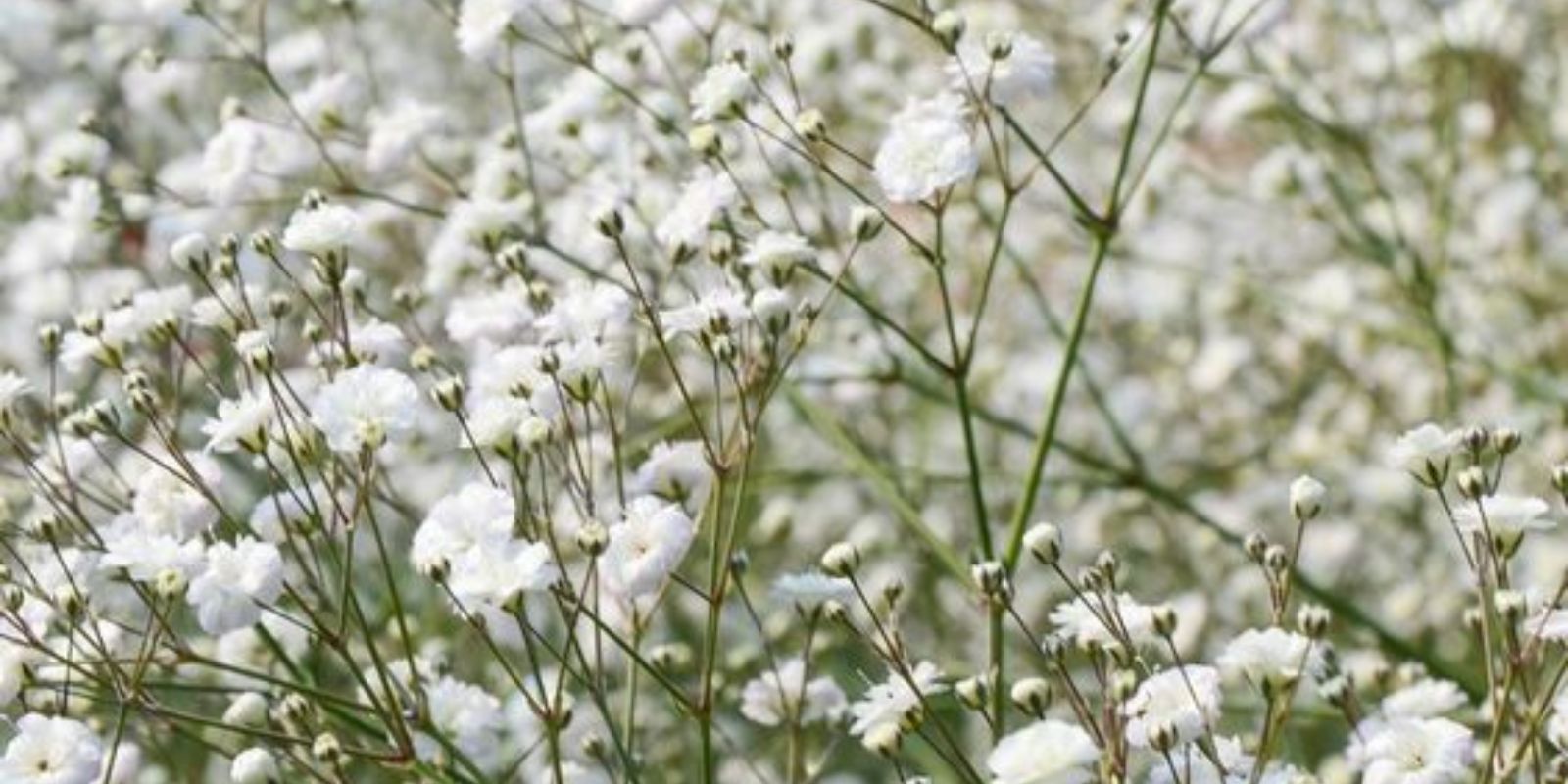Introduction
Baby’s Breath (Gypsophila paniculata) is a charming and delicate plant known for its small, white or pink flowers that resemble clouds. Often used in floral arrangements, particularly as a filler, Baby’s Breath adds a soft, romantic touch to bouquets and gardens alike. This hardy perennial is easy to grow and maintain, making it an excellent choice for gardeners of all levels. In this article, we will explore the steps to successfully grow and care for Baby’s Breath, ensuring a beautiful and abundant bloom in your garden.
Choosing the Right Location
Baby’s Breath thrives best in full sun, requiring at least six hours of direct sunlight each day. It prefers well-drained soil and can tolerate poor soil conditions, making it a versatile plant for various garden settings. The ideal location should have a slightly alkaline soil pH, ranging from 6.5 to 7.5. If your soil is too acidic, consider adding lime to raise the pH level. Good air circulation is also crucial for preventing fungal diseases, so avoid overcrowding this plant with other garden species.
Soil Preparation
Before planting Baby’s Breath, it is essential to prepare the soil properly. This plant does not tolerate heavy, clayey soils that retain too much moisture. To improve soil drainage, amend your garden bed with sand or gravel. Adding organic matter such as compost can also enhance soil fertility and structure, promoting healthy root development. Raised beds can be an excellent option if your garden soil is heavy and does not drain well.
Planting Baby’s Breath
Baby’s Breath can be grown from seeds, cuttings, or nursery-bought plants. If you are starting from seeds, sow them directly into the garden in the spring after the last frost date. Alternatively, you can start seeds indoors about six to eight weeks before the last expected frost and transplant the seedlings outdoors once they are large enough to handle. Plant the seeds or seedlings at least 12 inches apart to allow for adequate air circulation and growth.
If using cuttings, take them from a healthy, mature plant in early summer. Dip the cut end in rooting hormone and plant it in well-draining soil. Keep the soil moist but not waterlogged, and provide indirect sunlight until the cuttings establish roots.
Watering and Fertilizing
Baby’s Breath is drought-tolerant once established and does not require frequent watering. Overwatering can lead to root rot and other issues, so it is crucial to let the soil dry out between waterings. A good rule of thumb is to water the plant deeply but infrequently, allowing the top inch of soil to dry out before the next watering session.
Fertilization should be light, as Baby’s Breath does not require much feeding. A balanced, slow-release fertilizer applied in the spring can provide the necessary nutrients for healthy growth. Avoid high-nitrogen fertilizers, as they can promote excessive foliage growth at the expense of flowers.
Pruning and Maintenance
Regular pruning helps maintain the plant’s shape and encourages more blooms. After the initial flowering period, deadhead the spent flowers to promote a second bloom cycle. In late fall, cut the plant back to the ground to prepare it for the winter. This also helps prevent diseases and pests from overwintering in the plant debris.
Pest and Disease Management
Baby’s Breath is relatively pest-resistant, but it can occasionally be affected by aphids, spider mites, or leafhoppers. These pests can be managed by spraying the plant with a strong stream of water or using insecticidal soap. Fungal diseases like powdery mildew and root rot can occur if the plant is overwatered or if air circulation is poor. Ensure the soil is well-drained and avoid overhead watering to reduce the risk of fungal infections.
Propagation
Propagating Baby’s Breath is straightforward, whether through seeds, cuttings, or division. For seed propagation, collect seeds from the spent flowers in late summer or early fall. Store the seeds in a cool, dry place until you are ready to plant them in the spring.
To propagate by cuttings, follow the steps mentioned earlier for planting cuttings. Dividing mature plants every two to three years helps prevent overcrowding and promotes more vigorous growth. When dividing, dig up the entire plant, gently separate the roots, and replant the divisions in well-prepared soil.
Companion Planting and Uses
Baby’s Breath pairs beautifully with a wide range of garden plants. Its airy blooms complement the more substantial forms of roses, lilies, and peonies. It can also be planted alongside other drought-tolerant perennials like lavender, yarrow, and sedum. In addition to its ornamental value, Baby’s Breath can be used in dried floral arrangements, wreaths, and other crafts due to its long-lasting nature.
Conclusion
Growing Baby’s Breath (Gypsophila paniculata) is a rewarding experience that adds elegance and charm to any garden. With its delicate flowers and easy maintenance, this plant is perfect for both novice and experienced gardeners. By choosing the right location, preparing the soil, and following proper watering and maintenance practices, you can enjoy a stunning display of Baby’s Breath in your garden. Whether used in fresh bouquets or dried arrangements, Baby’s Breath is sure to bring joy and beauty to your home. Start planting Baby’s Breath today and watch your garden transform into a breathtaking oasis of white blooms! 🌿
Would you like to know more about specific varieties of Baby’s Breath or tips for creating beautiful floral arrangements? Let’s explore together!

